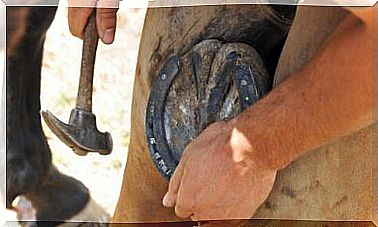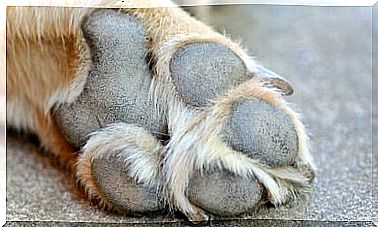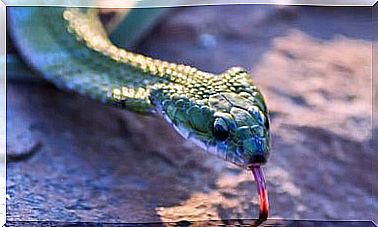The Eurasian Aurochs: A Huge Mammal
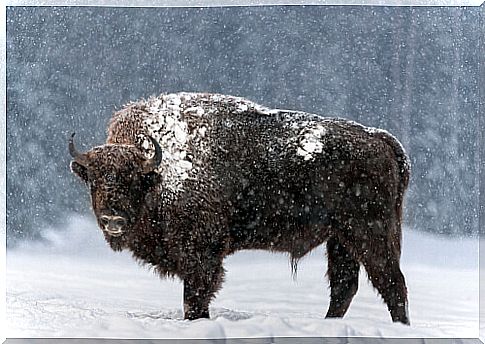
The Eurasian aurochs ( Bos primigenius primigenius ) is the ancestor of domestic cows and bulls. It roamed the Eurasian plains freely until its disappearance in 1627. Here we tell you about the impressive characteristics of this huge mammal.
Uro or bison? The taxonomic debate.
Until the 17th century, most European scientists and naturalists considered the aurochs and bison to be the same species. and they were supposed to be the common ancestor of our domestic cattle.
However, in the 18th century, some naturalists began to claim that there were two different species: the aurochs (wild ancestor of the bull) and the bison, a close relative alive today.
Therefore, there were two currents of opinion: that of the single bovine and that of the two separate species. Everything began to change as a result of several fossil discoveries in the 19th century. From then on it was seen how the Eurasian aurochs and the bison were clearly different, and some naturalists, such as Bojanus, changed their minds and accepted the theory of the two species as valid.
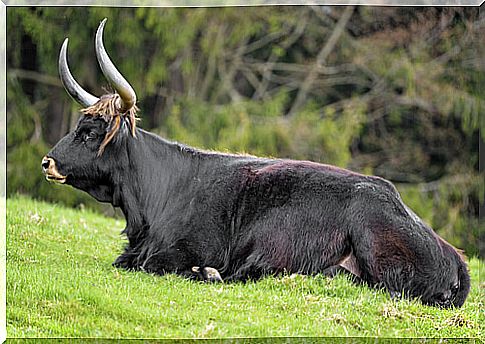
Characteristics of the Eurasian aurochs
The Eurasian aurochs resembled a kind of huge bull, with more savage characteristics. Its weight could easily reach a ton and it was two meters tall, slightly less than its relative, the American aurochs. Therefore, although similar, there were many things that differentiated them from current cattle :
- A considerably larger and heavier skull that supported horns that could measure a whopping three feet.
- Longer and more flexible legs, as well as muscular.
- A very athletic musculature, highlighting that of the neck area, particularly in males.
Behavior and habitat
The Eurasian aurochs are believed to have lived in herds, dominated by one or two males. The supremacy in them was established through fights where social status was gained. These fights occurred, as in most mammals, in the mating season.
Regarding their habitat, apart from the aforementioned meadows, it is believed that they frequented forest clearings and river banks. the loss of this habitat was the main factor in its extinction, as we will see later.
Natural history of a fascinating species
Expansion through Eurasia
During the Pliocene the climate was colder than it is today. For this reason, there were huge herbaceous meadows in Eurasia. This gave a great adaptive advantage to animals such as bovids, already accustomed to cold weather thanks to their fur and their condition as herbivores. Therefore, the aurochs spread throughout Eurasia diversifying into various subspecies, some of which would be domesticated.
Domestication: origin of our current livestock
According to several studies, during the Neolithic revolution there were two domestications in different parts of the world. These domestications were as follows:
- In the Indian subcontinent, giving rise to the current zebu ( Bos primigenius indicu s).
- In Europe giving rise to domestic cows and bulls ( Bos primigenius taurus ).
Extinction
Like most of the Pleistocene fauna, the aurochs were reducing their habitat due to human expansion. By hunting and expanding crops, these magnificent animals were finding less and less place to live.
Its population was reduced to a few hundred in the Middle Ages. The last specimens lived in the forests of Poland, where they were an exclusive hunting trophy for kings. The last specimen, a female, died in the Jaktorow Forest in 1627.
The “genetic resurrection” of the aurochs
In recent years, various programs have been proposed to try to obtain specimens as similar as possible to the original uro.
This is achieved by crossing domestic breeds with ancestral characteristics, some of which are already in decline. Some of these races would be the Spanish sayagüesa, limia and pajuna , the primitive Italian maremmana and the Portuguese Maronese .
The genetic material of aurochs comes from fossil remains, and it is expected that by 2025 the most similar specimen to date will be obtained.
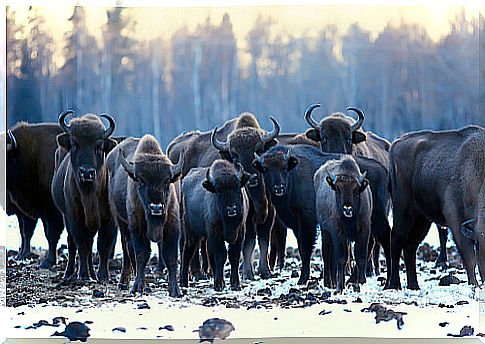
One of the things that, however, will be difficult to recover will be the character and behavior of the ancestral Uros, currently affected by centuries of domestication.

